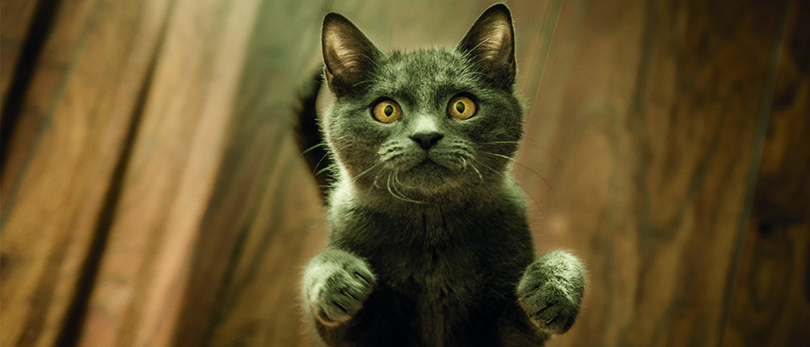Zoophobia: fear of animals
Zoophobia is a fear of animals. This phobia is quite common in young children and for some people it persists into adulthood. For people with zoophobia, this condition can be very destabilising and distressing.

Understanding zoophobia better
A person suffering from zoophobia has an intense, obsessive and irrational fear of all animals, large and small, in an undifferentiated way or of a specific animal (cats, dogs, snakes, spiders, etc.). In this case, the fear of animals is considered as a specific phobia. It is then given its own name: entomophobia, for example, refers to the fear of insects.
Zoophobia should not be confused with the sensitive fear of dangerous or threatening animals, such as the fear of wild bears or poisonous snakes. These are anxious reactions out of proportion to the actual threat. Most of the time, it occurs in anticipation or in front of animals that do not show any aggressive behaviour. It is therefore a fear that regularly causes misunderstanding, distress and/or concrete dysfunction in the individual’s daily life.
The causes of this phobia are multiple
Understanding the cause of the fear of animals is an important part of therapy. Zoophobia often originates in childhood and can be attributed to a traumatic event with an animal. For example, in the majority of cases of cynophobia – the fear of dogs – it is triggered at an early age as a result of a bite or attack, even if this did not necessarily lead to an injury. The risk is then systematically overestimated and each dog is perceived as a threat that the individual will try by all means to avoid in a self-preservation perspective. The repetition of these behaviours reinforces the trauma and favours the appearance of panic attacks at the mention or contact of the object of the phobia.
Phobic behaviour towards animals can also come from the people around you. Indeed, if you systematically see your parents or relatives being very anxious in the presence of one or more animals, sometimes to the point of preventing you from having any contact with them, you will have a much greater chance of developing zoophobia, even if there is no traumatic experience at its source. Education also plays a major role in the propensity to feel anxiety. A family circle that overemphasises the risks of every situation will again make you much more prone to anxiety disorders such as zoophobia.
The symptoms of animal phobia
The symptoms that are usually associated with zoophobia are often those that are also found in panic disorders in general. They are also common to most specific phobias but also to complex phobias such as agoraphobia or social phobias. Thus, if a zoophobic person is confronted with the object of his or her fear, he or she may experience one or more of the following particularly distressing manifestations:
- Difficulty breathing, hyperventilation
- Panic attack
- Increased blood pressure and heart rate
- Dizziness, discomfort
- Nausea
- Vital need to escape
- Hyperstress, anxiété
Depending on your degree of zoophobia, these emotional reactions can be extremely intense and difficult to bear. The problem is that they are mostly systematic. As a result, you will develop a very strong tendency to avoid all risky situations, which can be a real handicap in your life in the long term, especially at the social and family level, preventing you, for example, from visiting family members who might have a pet.
Possible treatments for zoophobia
Zoophobia is nowadays very treatable. Cognitive-behavioural therapies (CBT) are currently the most indicated treatment method because of their effectiveness and the rapid results they show. These therapies are structured around :
- elaboration sessions in which the person with zoophobia talks in depth about his or her panic fear and reactions, both physical and psychological, with the therapist in order to explore the causes and possible sources of the fear;
- desensitisation sessions in which they are exposed to animals or images of animals to become familiar with them. In in vivo exhibitions, therapy animals have been specially trained for the treatment of people in distress.
Virtual Reality Exposure Therapies (VRET) to treat zoophobia
The anxiety felt by zoophobic people is often too intense to consider confronting the animal directly. Virtual reality therefore offers a relevant and practical alternative to overcome this difficulty. It works on the same principle as CBT, seeking to make the fearful reactions to animals disappear completely through repeated exposure, with the important difference that the individual will be immersed in a realistic virtual world that has been entirely recreated. With the help of the therapist, he or she will be able to practice emotional management techniques in a risk-free environment and gradually regain confidence in his or her ability to deal with this type of situation.
Drug treatments
People with zoophobia can also take medication to manage zoophobia. This option is usually used in cases where people suffer from such severe fear and anxiety that other types of therapy cannot be undertaken directly. Medication will be used to ease the phobic reaction to animals so that the patient and therapist can then work together in sessions and develop a plan for the patient to work on at home to control their fear.
If you recognise yourself in the description of a zoophobic person, it is quite possible that you do indeed suffer from zoophobia on some level. As with many phobic disorders, this can be quite difficult to fully accept. Some phobias are the result of past experiences, while others may be inherent in you, regardless of the contact you have had with the source of your fear. More likely, it is a combination of both, but if your history with animals is becoming increasingly problematic, you may want to seek professional help to get your life back on track.
Emergency tips!
However, if you find yourself facing an animal that terrorises you and you feel completely helpless, there are some useful strategies to know about in order to get out of this mess. Beware: these are by no means lasting solutions for recovering from your disorder.
The most important thing to do when faced with such situations is to try to control your breathing. The increase in your anxiety level when faced with a situation that you strongly fear will generally lead to an increase in your breathing and heart rate, which in turn will increase your anxiety level. You can then carry out heart coherence breathing exercises such as square breathing (breathe in through your nose, hold your breath, breathe out, then hold your breath for the same length of time for each step). This should help to bring your anxiety levels down and restore a modicum of serenity.
If you are accompanied, do not hesitate to ask for help from the person who is with you and rely on him or her. He or she can physically help you if the bodily sensations you are feeling are too disturbing for you to move forward normally. But it is important to realise that seeing someone react calmly to a situation that your brain identifies as a great danger will help you to better control your anxiety at the moment, but also in the future.
Finally, the last recommendation is also the best known: if you are confronted with an animal that is considered harmless, it is better to avoid running. When you run, you draw the animal’s attention to you and it will tend to follow you. Therefore, try to concentrate on your breathing, ask for help from people you trust and keep going even if you are very slow.


